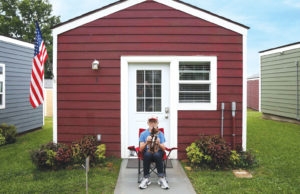While the eyes of the West are on Helmand province, where one of the
war’s biggest military offensives looms, Afghans’ attention this week
has been riveted by a lethal drama in the high-altitude heart of the
country.
Authorities announced Wednesday that the death toll had risen to at least 166 in a series of avalanches that thundered down the
the historic route through the rugged mountains of the Hindu Kush. An
additional 125 people were injured when snowslides struck, tossing some
of their vehicles hundreds of yards. The snow engulfed three miles of
roadway.
Thousands of travelers have been plucked since
Monday from the bitter cold of the 12,500-foot-high pass, but more were
feared entombed in buried cars, or trapped in buses that were swept off
the narrow road into deep gorges. The tunnel through the pass, built in
the 1960s by the Soviets, was considered an engineering marvel of its
era — and one that shaved days off the travel time between the capital,
But it also has a long history as a deathtrap.
Hundreds died in a catastrophic fire in 1982. The tunnel fell into
disuse and disrepair during the country’s civil war, reopening to the
public only after the fall of the Taliban movement in 2001.
Even now, the road through the pass remains a reminder of the perilous fragility of much of
infrastructure, despite the billions of dollars in international aid
pumped into the country in recent years. A crash inside the dimly
lighted, poorly ventilated mile-and-a-half-long tunnel can easily prove
fatal if it disables the vehicles involved because anyone trying to
make his way out on foot is liable to be overcome by fumes.
Road travel through the soaring peaks of the
is a great leveler. On any given day, the route is packed with
ramshackle buses and trucks overflowing with goods and passengers,
sharing rutted asphalt with sleek, late-model cars whisking the
well-off to their destinations, north or south.
army is primed to play a significant role in the expected coalition
assault on the Helmand province town of Marjah, a Taliban haven that
also serves as hub of bomb making and narcotics trafficking. But a far
greater rush of national pride has been generated by its
search-and-rescue role in the
hundreds of soldiers and police worked frantically to dig out stranded
cars, pulling out passengers weak from hunger and cold.
“Our security forces have saved the lives of many,
many of their countrymen,” Zemari Bashary, an Interior Ministry
spokesman, told reporters in
The North Atlantic Treaty Organization aided in the
rescue, providing four Chinook helicopters and medical care for
survivors at Bagram airfield, the country’s biggest military base.
Scenes of dazed survivors being helped to safety
have become a staple on Afghan television. Harrowing tales, including
the story of seven children who survived the ordeal but lost their
mother, have generated an outpouring of public sympathy.
Bashary said, however, that the rescue effort was
“95 percent” complete, suggesting that chances of finding more
survivors were considered slim.
—
(c) 2010, Los Angeles Times.
Visit the Los Angeles Times on the Internet at http://www.latimes.com/
Distributed by McClatchy-Tribune Information Services.













